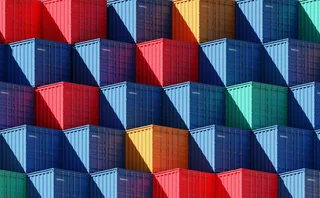
Exchange of the year: SGX
Singapore Exchange pushes ahead in LNG, iron ore, freight and electricity

Energy Risk Awards 2016
One of the more exciting trends in the global energy markets today is the emergence of liquefied natural gas (LNG) as a tradeable commodity. Historically dominated by inflexible, long-term contracts between producers and consumers, the LNG market is beginning to open up, with greater spot trading of cargoes, more buyer-friendly contracts and new approaches to pricing as market participants increasingly spurn the old standby, crude oil indexation.
Against this backdrop, Singapore Exchange (SGX) has been an industry leader in providing new hedging tools for the expanding LNG trade, which is projected to more than double between 2012 and 2040, according to the US Energy Information Administration. Last year, SGX unveiled a new spot price index for LNG called the ‘Singapore Sling' – short for Singapore SGX LNG Index Group – and in January it launched cash-settled swaps and futures based on the index. Trafigura, the Netherlands-based global commodity trading house, and local energy firm Pavilion Gas executed the inaugural trade.
"We wanted to get involved because Asia was set to be a key centre for trading," says Lily Chia, SGX's head of oil, power and gas. Chia says the exchange launched Sling because of market participants' dissatisfaction with incumbent LNG indexes. Discussions began in 2014, and SGX put together a group of companies – now numbering more than 20 – to contribute price information used to calculate the weekly index. The index became publicly available in October last year. While trading in Sling derivatives has been modest so far, Chia describes the initiative as a long-term play and expects volumes to rise as market participants become more familiar with the index.
LNG is not the only commodity in which SGX has made a splash over the past 18 months. Iron ore derivatives volumes surged 83% year-on-year to a record 1.1 billion tonnes in 2015, as cratering prices led market participants to step up hedging. Already a dominant player in the raw material – SGX clears more than 90% of iron ore swaps globally – the exchange continued to innovate with the August 2015 launch of lump premium swaps and futures, which allow market participants to manage their exposure to quality differentials that had previously been unhedgeable. During the first four months of trading, lump premium derivatives volumes were 2.9 million tonnes.
SGX also had a strong year in freight, increasing its global market share in dry bulk freight derivatives to more than 30% in December 2015 from just 4% a year earlier, according to figures from the Baltic Exchange in London. Initiatives such as new contracts, clearing fee changes and more cross-product margin offset pairs helped SGX grow its freight business, according to Chia.
"Market participants appreciate the complementary nature of our dry freight and iron ore products, and by putting them on the same exchange, users gain substantial savings in terms of capital costs and margin efficiencies," she says.
Last but not least, trading on SGX's new electricity futures market – the first such market in Asia – got under way in June 2015. By the end of the year, total traded volumes had reached 933 lots, a respectable launch for a new power market covering a relatively small territory. By comparison, the Australian Securities Exchange's (ASX) electricity futures market in Australia saw 945 lots traded in the seven months after its September 2002 launch, and just 66 lots were traded in the same time period after ASX kicked off trading of New Zealand electricity futures in July 2009.
Market participants praise SGX's handling of the launch. Liberalisation of Singapore's electricity market "has created great potential for organisations to choose Singapore as a regional trading hub based on its core values of reliability, transparency and its established track record", says Vijay Sirse, the founder, chairman and chief executive of CPvT Energy Asia, a Singapore-based electricity retailer that uses SGX's futures for hedging.
SGX's ambitions extend beyond Asia. The exchange has worked hard to drum up international interest in its derivatives offerings, opening a London office and working with US and European Union regulators to ensure companies around the world feel comfortable trading on SGX's markets. In April 2015, SGX's clearing house won recognition as a third-country central counterparty (CCP) from the European Securities and Markets Authority and, in December 2013, it registered as a derivatives clearing organisation with the US Commodity Futures Trading Commission, the first Asian CCP to do so.
"We have committed substantial resources to make sure that we meet international regulatory standards," Chia says. "This is extremely important to our value proposition."
Only users who have a paid subscription or are part of a corporate subscription are able to print or copy content.
To access these options, along with all other subscription benefits, please contact info@risk.net or view our subscription options here: http://subscriptions.risk.net/subscribe
You are currently unable to print this content. Please contact info@risk.net to find out more.
You are currently unable to copy this content. Please contact info@risk.net to find out more.
Copyright Infopro Digital Limited. All rights reserved.
As outlined in our terms and conditions, https://www.infopro-digital.com/terms-and-conditions/subscriptions/ (point 2.4), printing is limited to a single copy.
If you would like to purchase additional rights please email info@risk.net
Copyright Infopro Digital Limited. All rights reserved.
You may share this content using our article tools. As outlined in our terms and conditions, https://www.infopro-digital.com/terms-and-conditions/subscriptions/ (clause 2.4), an Authorised User may only make one copy of the materials for their own personal use. You must also comply with the restrictions in clause 2.5.
If you would like to purchase additional rights please email info@risk.net
More on Commodities
Energy Risk Asia Awards 2024: The winners
Winning firms adapt to change with exemplary risk management skills
Foreign funds are bulls in China’s onshore commodity futures
Growing participation from overseas investors is boosting liquidity in what’s already a boom market
Energy Risk Software Rankings 2024: IT demands increase amid rising risk
Heightened geopolitical and credit risk increase requirements on commodities software
Energy Risk Asia Awards 2023: The winners
Winning firms demonstrate resilience and robust risk management amid testing times
ION Commodities: addressing the market’s recent pain points
Energy Risk Software Rankings winner’s interview: ION Commodities
Energy Risk Commodity Rankings 2023: adapting to new market dynamics
Winners of the 2023 Commodity Rankings provided reliability when clients faced extreme change
Energy Risk Software Rankings 2023: managing uncertainty
Unpredictable markets make CTRM software choices key
Navigating the volatility and complexity of commodity markets
Commodity markets have experienced significant challenges since the Covid-19 pandemic, the conflict in Ukraine and the subsequent sanctions imposed on Russia. These unprecedented events have caused fluctuations in supply and demand, disrupted global…







